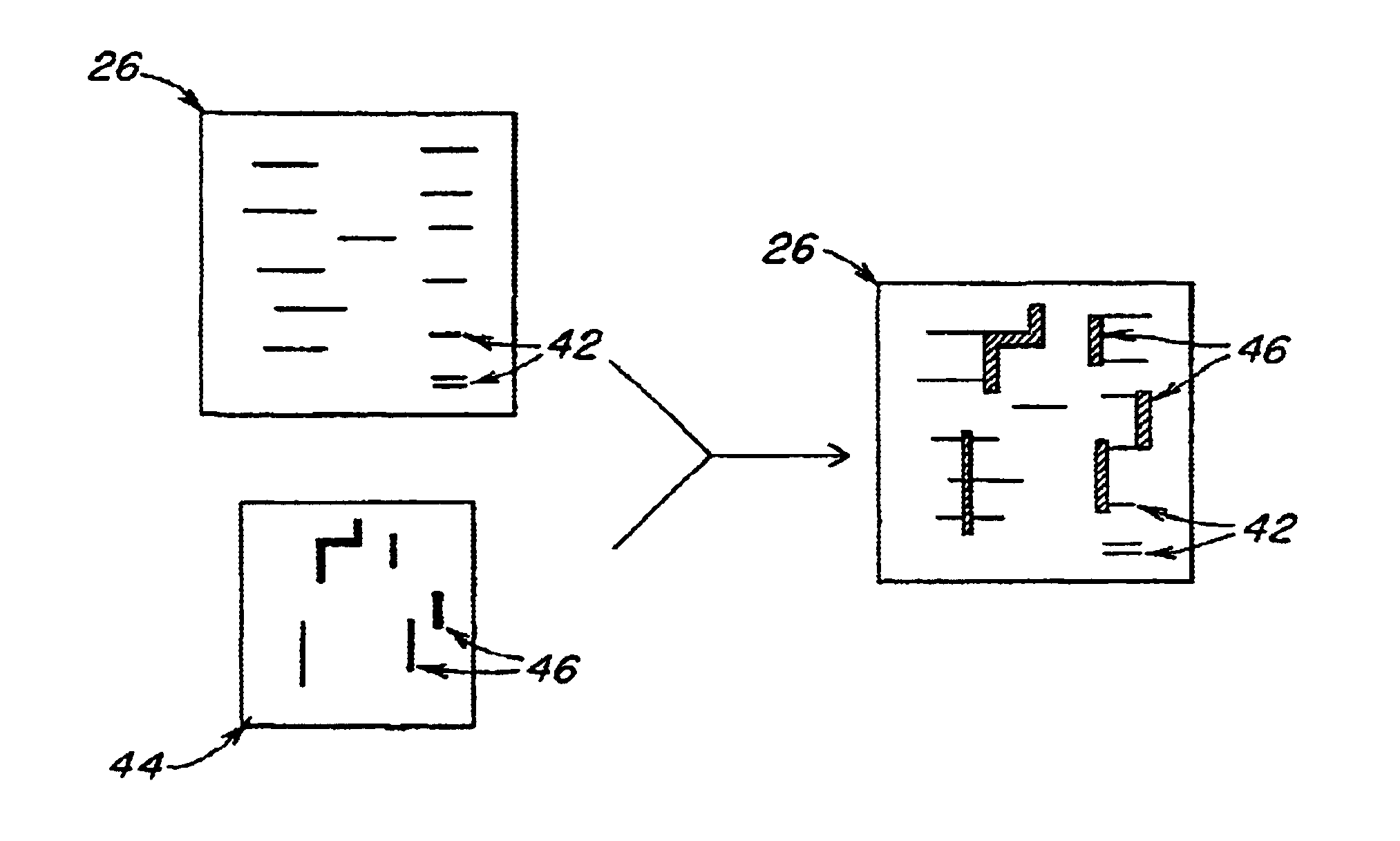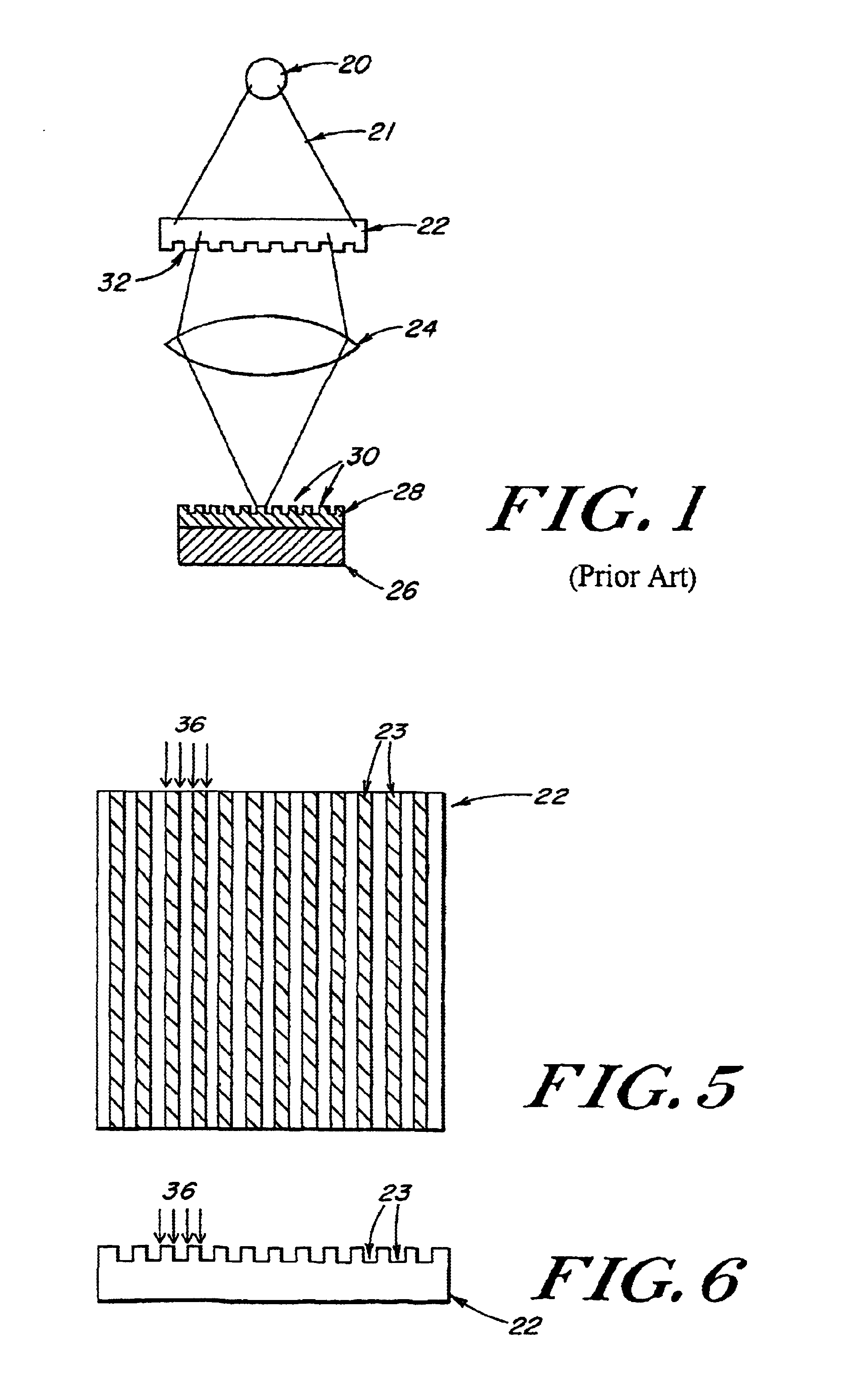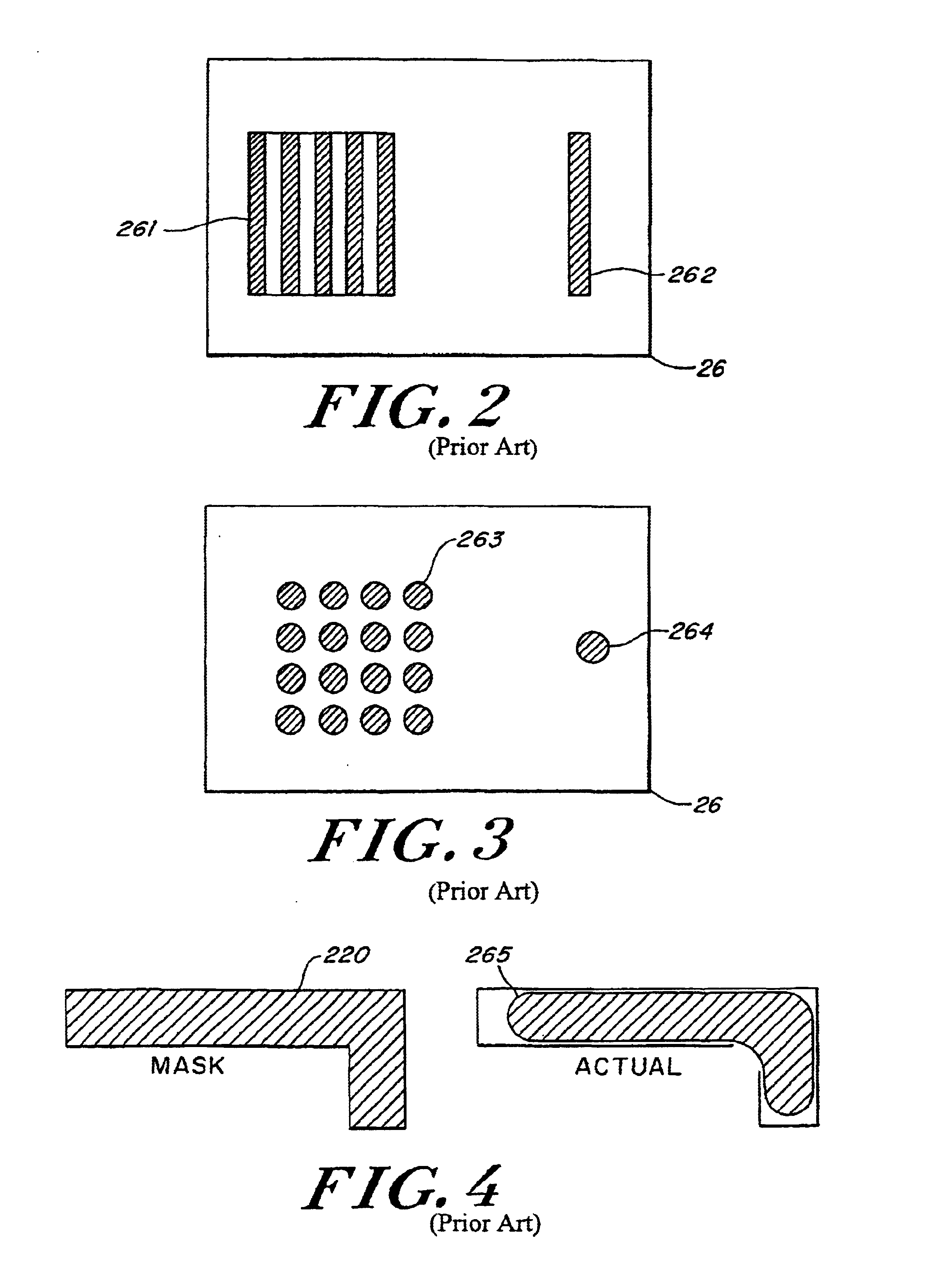Method of design and fabrication of integrated circuits using regular arrays and gratings
a technology of integrated circuits and gratings, which is applied in the direction of photomechanical equipment, instruments, photo-taking processes, etc., can solve the problems of limited resolution of optical steppers, high cost of lenses with very high numerical apertures ("na") approaching 0.8, and further limited
- Summary
- Abstract
- Description
- Claims
- Application Information
AI Technical Summary
Benefits of technology
Problems solved by technology
Method used
Image
Examples
Embodiment Construction
The present invention is directed to an imaging approach that overcomes the limitations of the conventional techniques, and confers a number of advantages. It addresses the problems of optical proximity and spatial frequency effects while maintaining the resolution-enhancement performance required by sub-wavelength lithography.
In the following description, the phrase, "lines," refers to either the trenches or the raised areas; e.g., plateaus; on a wafer. Moreover, the phrase, "contacts," refers to either the holes or pillars on a wafer. The described photoresists may either be a negative tone or a positive tone. The descriptions are applicable to either positive or negative imaging of the wafer or substrate.
With respect to spatial frequency effects and optical proximity effects, any image that is lithographically exposed can be thought of in Fourier space, where components of various spatial frequencies sum to form the complete image. The lens acts as a low-pass filter because it ha...
PUM
| Property | Measurement | Unit |
|---|---|---|
| wavelength | aaaaa | aaaaa |
| critical dimension | aaaaa | aaaaa |
| density | aaaaa | aaaaa |
Abstract
Description
Claims
Application Information
 Login to View More
Login to View More - R&D
- Intellectual Property
- Life Sciences
- Materials
- Tech Scout
- Unparalleled Data Quality
- Higher Quality Content
- 60% Fewer Hallucinations
Browse by: Latest US Patents, China's latest patents, Technical Efficacy Thesaurus, Application Domain, Technology Topic, Popular Technical Reports.
© 2025 PatSnap. All rights reserved.Legal|Privacy policy|Modern Slavery Act Transparency Statement|Sitemap|About US| Contact US: help@patsnap.com



